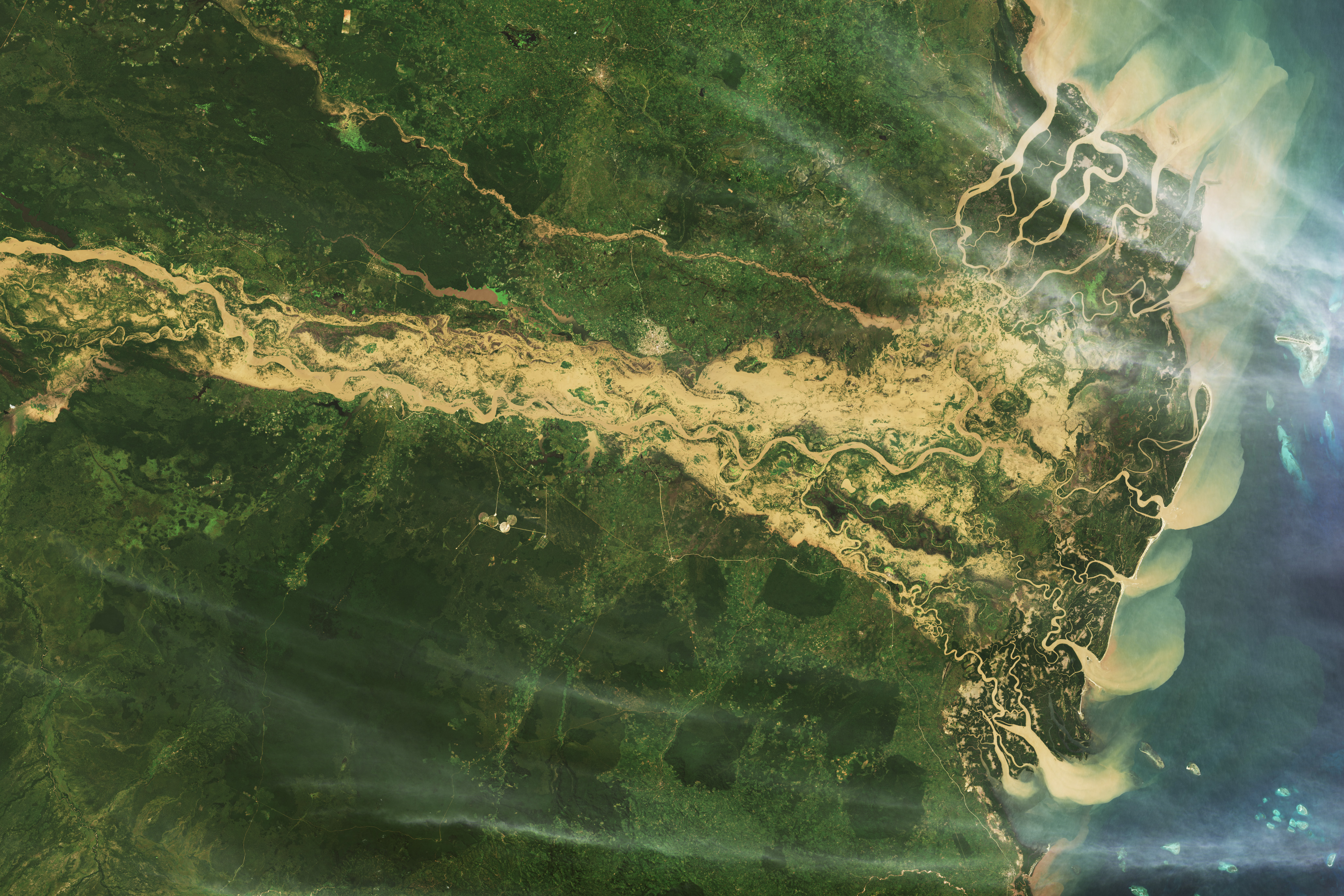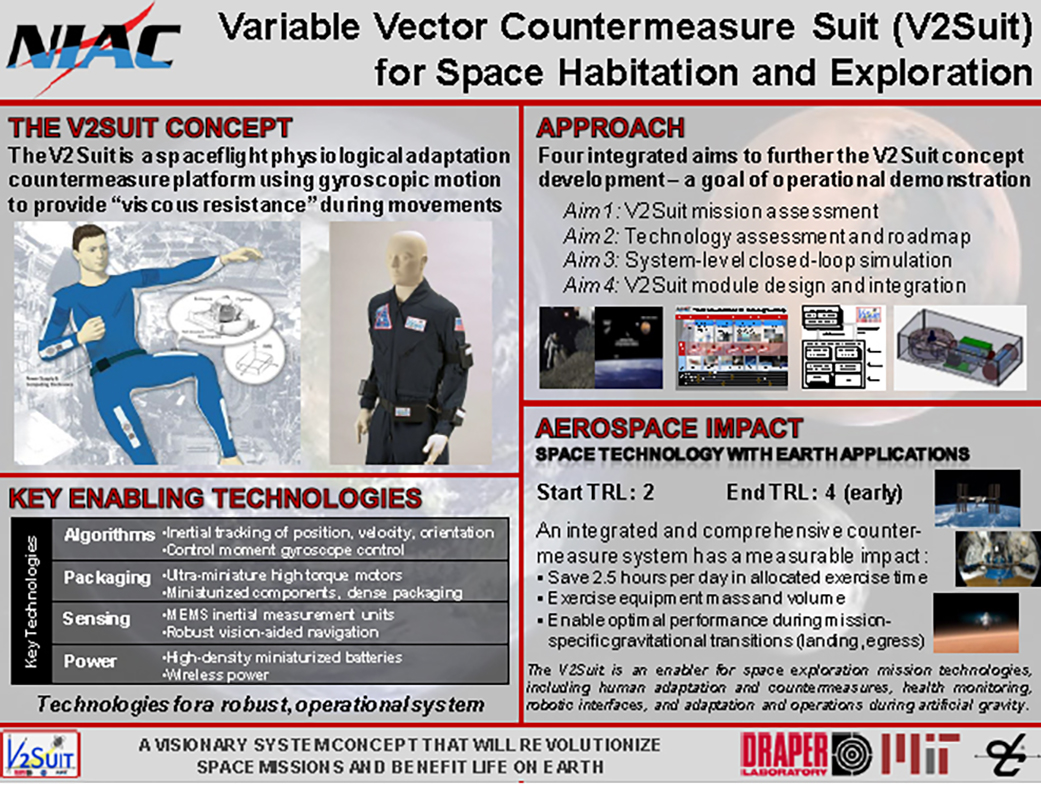Kevin Duda
Charles Stark Draper Laboratory Inc.
NIAC 2012 Phase II Duda V2 Suit Final Report
Description
The “Variable Vector Countermeasure Suit (V2Suit) for Space Habitation and Exploration” is a visionary system concept that will revolutionize space missions by providing a platform for integrating sensors and actuators with daily astronaut intravehicular activities, and testing the interactions between countermeasures to improve human health and adaptation countermeasures. The V2Suit uses control moment gyroscopes within a miniaturized module placed on the major segments of the body to provide a “viscous resistance” during movements – a countermeasure to the sensorimotor and musculoskeletal adaptation performance decrements that manifest themselves while living and working in microgravity, and during gravitational transitions during long-duration spaceflight, including post-flight recovery and rehabilitation. Effective countermeasures to this de-conditioning and the unique sensorimotor characteristics associated with living and working in 0-G are critical for future space missions. This proposed project is a follow-on to the current NIAC Phase I V2Suit, which is exploring the concept and maturing the technology through proof-of-concept simulation and limited hardware-in-the-loop testing. A technology readiness level of 2 is expected at the end of Phase I, and through further Phase II study and brassboard unit development the technology readiness level is estimated to be an early 4. This proposed Phase II project has four integrated aims for further development of the concept studied in the Phase I award, assessing the V2Suit in a mission context, and assessing the programmatic benefits – all contributing to a technology development roadmap for operational demonstration.
Aim 1
Assessment of the V2Suit in a mission context, focusing on the sensorimotor and musculoskeletal challenges during and following gravitational transitions after exposure to weightlessness or artificial gravity during a long-duration spaceflight.
Aim 2
Document the key technologies required for operational use and assess them against current state-of-the-art.
Aim 3
Develop a closed-loop simulation framework for V2Suit performance assessment and evaluation of alternative configurations.
Aim 4
Design, fabricate, and integrate a brassboard unit that includes the flywheel gyroscopes and position and orientation sensors within a single V2Suit module to impart gyroscopic torques during limb movement.
Anticipated Benefits
The successful development and integration of the V2Suit will be a be an enabler for space exploration mission technologies, including human health and adaptation countermeasures, autonomous health monitoring, human robotic interfaces, and adaptation and operations during artificial gravity. An integrated and comprehensive countermeasure system has a measurable impact in human performance following a space mission, and mass and volume savings in the spacecraft itself. This type of countermeasure suit also has earth benefits, particularly in gait or movement stabilization for the elderly, or rehabilitating individuals – the gyroscopes could be programmed to provide a kinematic envelope of least resistance during walking. Therefore, providing tactile feedback to the appropriate biomechanical coordination either to assist in gait correction or facilitate recovery following spaceflight.
































